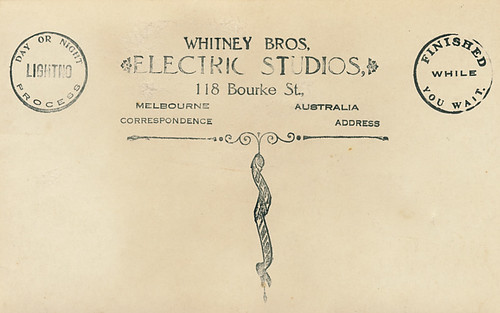Difference between revisions of "Postcard format"
m |
m (Added heading) |
||
| (9 intermediate revisions by 6 users not shown) | |||
| Line 1: | Line 1: | ||
{{Flickr image | {{Flickr image | ||
| − | | image_source=http://www.flickr.com/photos/89864432@N00/3222986346/in/pool- | + | | image_source=http://www.flickr.com/photos/89864432@N00/3222986346/in/pool-camerawiki/ |
| image=http://farm4.static.flickr.com/3368/3222986346_f84dda9d64.jpg | | image=http://farm4.static.flickr.com/3368/3222986346_f84dda9d64.jpg | ||
| − | | image_align= | + | | image_align=right |
| image_text=postcard format cameras [[Ernemann Heag II|Heag II Ser. II]], [[Conley Junior|Junior]] and [[Black Beauty]] | | image_text=postcard format cameras [[Ernemann Heag II|Heag II Ser. II]], [[Conley Junior|Junior]] and [[Black Beauty]] | ||
| − | + | |image_by= Uwe Kulick | |
| + | |image_rights= with permission | ||
| − | Some exposure formats are | + | }} |
| + | |||
| + | Some exposure formats are known as '''postcard format'''. <br>Common postcard formats are: | ||
{| | {| | ||
| − | || Format || | + | || '''Format''' || '''Aspect ratio''' || '''Centimetres''' |
|- | |- | ||
| − | || | + | || |
|- | |- | ||
|| 10×15 cm || 3:2 || 10×15 | || 10×15 cm || 3:2 || 10×15 | ||
|- | |- | ||
| − | || 3¼×5½ inch || 22:13 || 8¼×14 | + | || 3¼×5½ inch (122 rollfilm) || 22:13 || 8¼×14 |
|- | |- | ||
|| Special postcard formats | || Special postcard formats | ||
| Line 20: | Line 23: | ||
|| 2½×3½ inch<br/>(tintype postcard, see [[Mandel-ette]]) || 7:5 || 6 1/3×9 | || 2½×3½ inch<br/>(tintype postcard, see [[Mandel-ette]]) || 7:5 || 6 1/3×9 | ||
|} | |} | ||
| − | |||
| − | These exposure formats are all resembling the common | + | |
| + | |||
| + | These exposure formats are all resembling the common size of postcards or postal cards or were actually used for making postcard photo prints. Postcards became popular since 1875 when the postal card was accepted as international standard for lower rate message sending on un-enveloped rectangular pieces of cardboard, with postal cards mainly w/o picture as kind of prepaid letter, and postcards with image side and writing side. In the early 20th century the format was quite popular as photographic exposure format. Postcards could be made easily from the negatives as contact prints <ref>Spennemann, Dirk HR (2021) “Your’s truly”: The creation and consumption of commercial tourist portraits. <i>Heritage</i>, 4(4):3257–3287, https://doi.org/10.3390/heritage4040182</ref>. Special photo paper in thin cardboard quality could be used, with the field for address and stamp on the back. In some cameras used by 'while-you-wait' portrait photographers (see the [[Jano While-U-Wait Postcard Camera|Jano camera]]) a negative/positive process using photographic card replaced the ferrotype process. | ||
| + | |||
| + | |||
| + | {{Flickr_image | ||
| + | |image_source= http://www.flickr.com/photos/90900361@N08/9648551661/in/pool-camerawiki | ||
| + | |image= http://farm3.staticflickr.com/2880/9648551661_8f77c061fb.jpg | ||
| + | |image_align= center | ||
| + | |image_text= Printing on the back of a 1920s postcard size photograph<br/> | ||
| + | |scan_by= Geoff Harrisson | ||
| + | |image_rights= wp | ||
| + | }} | ||
| + | |||
| + | The [[Japanese formats|Japanese format]] name '''''Hagaki''''' (Japanese for "postcard") means the 3¼×5½ inch format. In the U.S. the typical postcard format cameras gave the same exposure format and most had the type name extension '''3A''' or '''No. 3A''', regardless of being a plate or a rollfilm camera. The German camera makers preferred the 10×15 centimetres format as postcard format. | ||
| + | |||
| + | |||
| + | ==Notes== | ||
| + | <references/> | ||
==Links== | ==Links== | ||
Latest revision as of 00:39, 31 July 2023

|
| postcard format cameras Heag II Ser. II, Junior and Black Beauty image by Uwe Kulick (Image rights) |
Some exposure formats are known as postcard format.
Common postcard formats are:
| Format | Aspect ratio | Centimetres |
| 10×15 cm | 3:2 | 10×15 |
| 3¼×5½ inch (122 rollfilm) | 22:13 | 8¼×14 |
| Special postcard formats | ||
| 2½×3½ inch (tintype postcard, see Mandel-ette) |
7:5 | 6 1/3×9 |
These exposure formats are all resembling the common size of postcards or postal cards or were actually used for making postcard photo prints. Postcards became popular since 1875 when the postal card was accepted as international standard for lower rate message sending on un-enveloped rectangular pieces of cardboard, with postal cards mainly w/o picture as kind of prepaid letter, and postcards with image side and writing side. In the early 20th century the format was quite popular as photographic exposure format. Postcards could be made easily from the negatives as contact prints [1]. Special photo paper in thin cardboard quality could be used, with the field for address and stamp on the back. In some cameras used by 'while-you-wait' portrait photographers (see the Jano camera) a negative/positive process using photographic card replaced the ferrotype process.

|
| Printing on the back of a 1920s postcard size photograph scanned by Geoff Harrisson (Image rights) |
The Japanese format name Hagaki (Japanese for "postcard") means the 3¼×5½ inch format. In the U.S. the typical postcard format cameras gave the same exposure format and most had the type name extension 3A or No. 3A, regardless of being a plate or a rollfilm camera. The German camera makers preferred the 10×15 centimetres format as postcard format.
Notes
- ↑ Spennemann, Dirk HR (2021) “Your’s truly”: The creation and consumption of commercial tourist portraits. Heritage, 4(4):3257–3287, https://doi.org/10.3390/heritage4040182
Links
- Postcard on Wikipedia